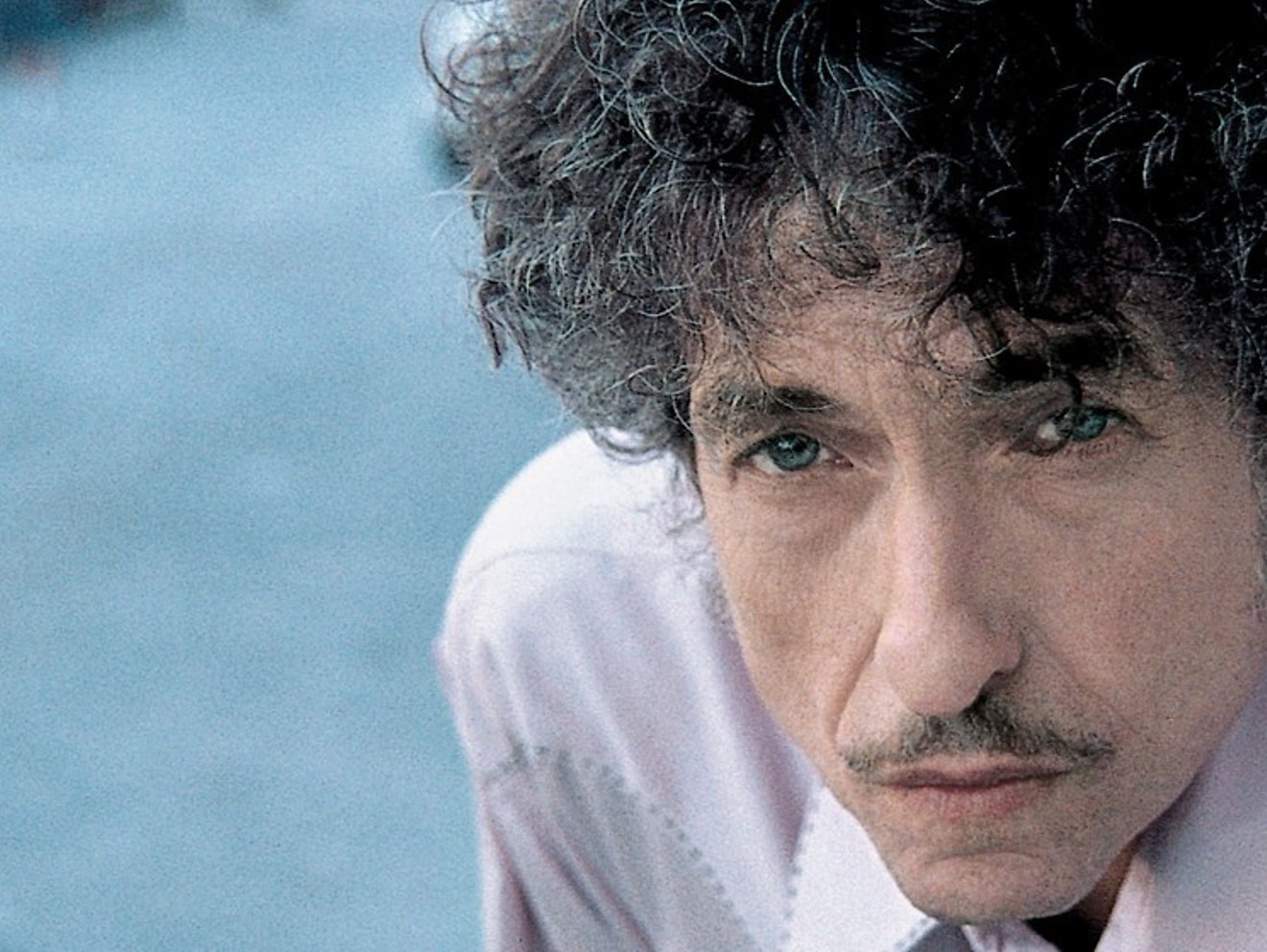Dylan's stylings had relatively humble beginnings on his eponymous debut album. Just a kid in New York City with a guitar and harmonica, Dylan churned out what would set the foundation for his decades-long career, although its track list containing only two original songs made it little more than a cover album.
Few artists can claim nearly 40 studio albums. However, being a musical icon is not without its downsides. From the infamous 1966 "Judas" concert, where Dylan's daring use of the electric guitar cost him among die-hard fans, to the toll old age and an unknowable amount of drug use have taken on his voice, Dylan has managed to mostly come out on top.
Dylan's work is a reflection of how he's been able to transform multiple genres — folk, rock, country — while maintaining his simultaneous dichotomy of the doe-eyed country boy lost in the city and the rebel without a cause. Regardless of whether every song sounds identical to the recording when played live — spoiler alert, it won't — each entry in his repertoire has made its own contribution to the future of popular music.
On the occasion of his 80th birthday, here are Bob Dylan's 10 best albums.
10. Nashville Skyline (1969)
Seven years into his recording career, Dylan released a deviation from his folk protesting, power-to-the-people facade. From the staccato sentence structure of "Lay, Lady, Lay," to the revisited version of "Girl from the North Country" with Johnny Cash, we're offered a glimpse into Dylan's lyricism at its origin — before it becomes a polished studio release. Although his voice was already on the fritz in Nashville Skyline, the simplicity of the arrangements and the soul of the lyrics more than makes up for it.
Dylan's mellow delivery: Throughout the album, Dylan sounds notably less biting than in his previous work. He quit smoking prior to the album's recording.
9. Desire (1976)
In 1964, The Times They Are a-Changin' signaled an intermission in Dylan's protesting. Casting off social justice for more fun and abstract numbers, such as "Bob Dylan's 115th Dream," it was only a matter of time before something jolted Dylan's songwriting back to its genesis — protesting. That something was the arrest of Black boxer Rubin "Hurricane" Carter. Dylan takes eight-and-a-half minutes to tell the tale of the man who was arrested and framed for a New Jersey homicide simply because of the color of his skin. "Although they could not produce the gun / The DA said he was the one who did the deed / And the all-white jury agreed," Dylan croons out on the album's lead track. "Couldn't help but make me feel ashamed / To live in a land where justice is a game."
Athletes: Dylan originally recorded another song about an athlete to be on Desire. "Catfish" was penned as a tribute to Major League Baseball pitcher Jim "Catfish" Hunter. The song ultimately didn't make the album cut, though, and ended up on The Bootleg Series.
8. Bob Dylan (1962)
We don't actually hear a Bob Dylan song until "Talkin' New York" comes on after the first track. In an album largely made up of covers, Dylan had his work cut out for him. He needed to take songs which were not his and make them his, which is debatably more difficult than writing one's own songs. Since the song was largely made up of old folk standards, Christianity and references to Jesus Christ pepper the album. In hindsight, it looks like an intentional foreshadowing for his 1980 album, Saved, which revolves around his newfound Christian faith.
What goes around comes around: "Song to Woody," one of the album's two originals, was an open letter from Dylan to his idol, Woody Guthrie. David Bowie took a cue from the song in his own recording, "Song for Bob Dylan." "Hear this, Robert Zimmerman, I wrote a song for you," Bowie sings, much like Dylan sang, "Hey, hey, Woody Guthrie, I wrote you a song" years before.
7. Blood on the Tracks (1975)
From the moment the album flicks on, you know this album is an homage to Dylan's early days. And with good reason. Dylan was coming off albums such as Self Portrait and Pat Garrett & Billy the Kid. Since 1966's Blonde on Blonde, Dylan hadn't been able to top his pot-fueled, nonsensical best. The largely acoustic album kicks off with "Tangled up in Blue," the long tale of Dylan's main character reuniting with an old lover in the middle of a strip club. From there, the LP goes on to unleash Dylan's spite in a more caustic fashion than any of his previous — or subsequent — work. Before the album wraps up with the calming, pseudo-biblical tale of "Shelter from the Storm," Dylan lets it all hang out on the anti-love song, "Idiot Wind." "Idiot wind/Blowing every time you move your teeth," he belts out in the chorus. "You're an idiot, babe / It's a wonder that you still know how to breathe."
Similarities to Dylan's personal life: Dylan has been notorious for his reluctance to live in the public eye or deal with the press. While he was recording the album, he was separated from Sara, his spouse at the time. To say fraught relationships make up the theme of Blood on the Tracks would be an understatement.
6. Hard Rain (1976)
As always, a live performance of a Dylan song may as well be a new song altogether. While some of his early live recordings suffer
Lack of appeal: Although one of the concerts heard on the Hard Rain album was broadcast on national television, the album only reached No. 17 in the U.S.
5. Another Side Of Bob Dylan (1964)
The 1964 album marked Dylan's departure from the protest song. Although he comes close to bearing the flag for some sort of social justice movement in "Chimes of Freedom," he never fully embraces the
The man in black: Johnny Cash would release a cover of the album's final song, "It Ain't Me Babe," in 1965 — four years before his and Dylan's duet on Nashville Skyline.
4. Bringing It All Back Home (1965)
Dylan did the unthinkable for his follow-up to Another Side — he played alongside a band. Every now and then, between the laughs and gags, Bringing It All Back Home delivers vivid
If this album has any fault, it's that it's incredibly easy to get attached to one song and forget about the hits on the album. The fun and nonsense of songs such as "Outlaw Blues" nearly overpower the sheer popularity of "Mr. Tambourine Man" and "Maggie's Farm." The album hits a low somber moment before finishing with the bleak portrait of life painted in "It's Alright, Ma (I'm Only Bleeding)." Cynicism reigns supreme for seven and a half minutes as Dylan rambles on in monotone about "Human gods aim for their mark / Make everything from toy guns that spark / To flesh-colored Christs that glow in the dark/It's easy to see without looking too far / That not much is really sacred."
Judas Iscariot: Although it's not entirely common for an artist to play alongside a band and remain the headliner of the group — Bruce Springsteen and the E Street Band, Billy Joel and The Hassles, etc. — fans did not take well to Dylan's introduction of electric instruments and a backing band at the time. To make matters worse, Dylan would often play the first half of a live show solo, in keeping with his early stylings. Then he would bring a band out for the second half, which ultimately led to a member of the crowd infamously blurting out, "Judas!" at Dylan. Responding exactly how anyone would expect him to, Dylan told his band to play louder before launching full-bore into his then-new single, "Like a Rolling Stone."
3. The Freewheelin' Bob Dylan (1963)
It's easy to hear history being made when you hit play on Dylan's second album and start it off with "Blowin' In the Wind." Prior to this, Dylan's introduction to the mainstream populace was mostly made up of traditional arrangements and cover songs. Now, however, audiences had a chance to see what Dylan was capable of as a songwriter and mouthpiece for activism. His penchant for rebellion laid out in "Masters of War" is starkly contrasted by the piercing vulnerability put on display in "Girl from the North Country."
Dylan ends up setting the tone for the rest of his breakup songwriting career with the blunt, matter-of-fact ballad "Don't Think Twice, It's All Right." "I ain't saying you treated me unkind / You could've done better but I don't mind," Dylan reminds whomever the recipient of the breakup was. "You just kind of wasted my precious time."
Covers: In a move which would become the norm for Dylan's career, covers of his work often took off with the same amount of, or more, success than the original. Whether it was Hendrix's "All Along the Watchtower" or Guns N' Roses' "Knockin' on Heaven's Door," Dylan covers — while often fundamentally reinterpreted — are a breed of their own. Peter,
2. Blonde on Blonde (1966)
Starting with the rollicking call for everyone to get stoned, Blonde on Blonde sets itself apart from anything Dylan had done up until 1966, as well as anything he'd do after that. Nearly every song has the potential to be a chart-topper, and the album isn't held in a box — the LP's mood swings from stoned out of coherence, to heartbreak, to disdain. It's like taking all of Dylan's previous albums and compiling them into a "Greatest Hits" compilation without recycling a single track.
The longing of "I Want You" is perfectly complemented by the antipathy of "Leopard-Skin Pill-Box Hat," which chronicles the mishaps of a materialistic, cheating significant other. The bedlam of it all is brought to a halt for a moment with "Just Like a Woman," where we learn that even someone who "makes love just like a woman" and "aches just like a woman" still "breaks just like a little girl."
Norwegian Wood (This Bird Has Flown): John Lennon drew inspiration from Dylan with his sitar-heavy Rubber Soul hit. Likewise, Blonde on Blonde's "Fourth Time Around" is viewed as an open letter to Lennon, warning him of coming too close to Dylan's lyricism and delivery. "I never took much / I never asked for your crutch / Now don't ask for mine," Dylan warns.
1. Highway 61 Revisited (1965)
What Highway 61 lacks in length, it makes up in depth. The nine-song album barely qualifies as anything more than an EP, but the impact it would have not only on Dylan's career but on the course of popular music and culture would last long after the 51-minute LP stopped spinning. The album's title track, complete with a slide whistle, gives a fictionalized retelling of the biblical instance of God instructing Abraham to sacrifice his son, Isaac. When Abraham asks God where the killing should take place, he's told, "Out on Highway 61."
Starting an album with "Like a Rolling Stone" and ensuring the other eight songs live up to the same stature is no small task, and it is pulled off. Highway 61 takes the whimsy of Bringing It All Back Home and the pseudo-maturity of Blonde on Blonde. It's all brought to a head in Dylan's 11-minute, somewhat nihilistic trip through time in "Desolation Row." But the running nihilism and loneliness comically depicted throughout the album always come back to the opening track, asking anyone who listens how it feels to be on your own.
Long player: "All Along the Watchtower" is the only song Dylan has played live more often than "Like a Rolling Stone." According to his website, he's played "Like a Rolling Stone" live 2010 times.
This article originally appeared in 2016 and has been updated.











